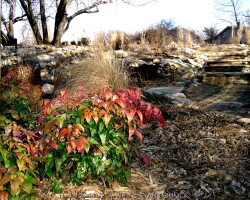
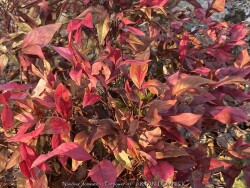

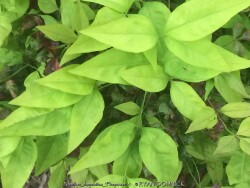
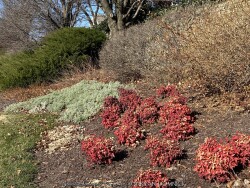
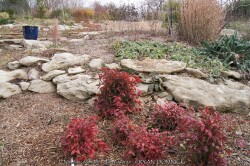
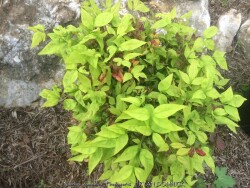
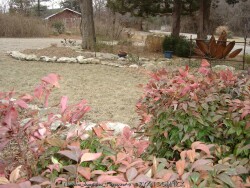
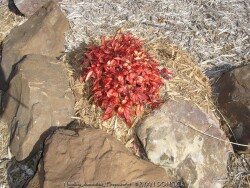
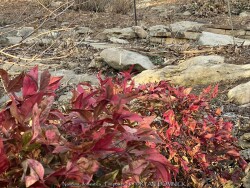

Plant Min Zone: 6a
Plant Max Zone: 10b
Sunlight: All Day Full Sun, Full Sun, Part Sun
Water / Rainfall: Low, Average, High
Soil Quality: Poor, Average, Rich
Bloom Season: None
Flower Color: None
Berry / Fruit Color: None
Spring Foliage Color: Reddish Green
Summer Foliage Color: Light Green
Fall Foliage Color: Light Green, Red
Evergreen Foliage: Yes
Winter Interest: Yes
Scented Flowers: No
Drought Tolerance: Medium, High
Wet-Feet Tolerance: Low
Humidity Tolerance: High
Wind Tolerance: Medium
Poor Soil Tolerance: Clay Soils, Sandy Soils, Rocky Soils, Acidic Soil (low PH)
Height: 1.5' - 2'
Width: 1.5' - 2'
Growth Rate: Extremely Slow
Service Life: Long: 5-10 years
Maintenance Need: Almost Zero Maintenance
Spreading Potential: Extremely Low
Yearly Trimming Tips: Slow Growing Shrub: No Trimming Needed for Many Years.
Plant Grouping Size: Small Grouping of 3-5, Medium Grouping of 5-10, Mass Planting of 10 or more
Best Side of House: South Exposure, West Exposure, East Exposure
Extreme Planting Locations: Survives Severe Drought, Tolerates Extreme Heat, Base of Retaining Wall Locations, Top of Retaining Wall Locations, Resistant to Rabbits
Ornamental Features: Multiple Seasons of Interest, Long Blooming Season, Long Lasting Fall Color, Bright Winter Color, Exceptional / Colorful Foliage
Special Landscape Uses: Hedge Row
Possible Pest Problems: Deer, Weed Competition
Plant Limitations: May get Occasional Winter-kill, Needs Thick Winter Mulch, Slow to Reach Mature Size, Susceptible to Iron Chlorosis
Shippable in 2026: YES
Nandina domestica is also called "Nandina" or "Heavenly Bamboo" despite not spreading or being related to bamboo at all. It is native to warm temperate climates in China. Bamboo-like foliage is very attractive with new growth emerging coppery peach with shades of pink and red in spring. During the summer, the foliage maintains a glossy deep to medium green color with no pest problems. White flowers appear which eventually turn into red fruits in the fall. Most birds do not like the fruit so they persist very well into winter down to about 0° F before freeze-drying to a reddish brown color and falling off. Often around Christmas time, the berries make a spectacular show combining classic colors of red and green in the winter landscape. The berries can be poisonous to some birds if they eat too many and all other food sources are depleted. This is a problem in your yard, please remove the fruits in the winter or before we have an arctic blast in which birds get desperate and will eat anything. The foliage is evergreen down to about -5° F and if colder, will simply become a deciduous shrub that year. If winter temperatures reach -10 or with strong winds, nandina will die to the ground like a perennial and come up from the base in April. In some parts of the country where winterkill never happens, nandina are invasive. (fruits spread by birds) This is likely in the Southeast and Texas south of zone 8b with plenty of rainfall. In those areas nandina will slowly take over the forest and displace native plants. There are many fruitless cultivars that can be used if invasiveness is a problem. In Kansas and in zone 5-7, This is never a problem because extreme winters keep the plant "in-check" and kill any seedlings trying to germinate. This shrub has a four-season appeal and is great for adding interest to Kansas landscapes in the winter. Best growth in Lawrence, KS (zone 6a) occurs when planted on South or West exposures benefiting from the hot micro climate. Nandina will also grow in just about any soil with full shade to full sun. If planted in full shade, growth will be very slow and extreme winters may kill them if not established; plant in spring only in this situation. Nandina look best in small to large groups. After established, its a "once it's there it's there forever" plant with very little maintenance. The only maintenance is cutting back winter kill occasionally or pruning to a more desirable mounded shape. It is worth noting that dwarf fruitless cultivars are less hardy in marginal zone 6 climates because of reduced ability to quickly recover from an occasional extreme winter. However, Nandina domestica 'Firepower' seems to persist well here!